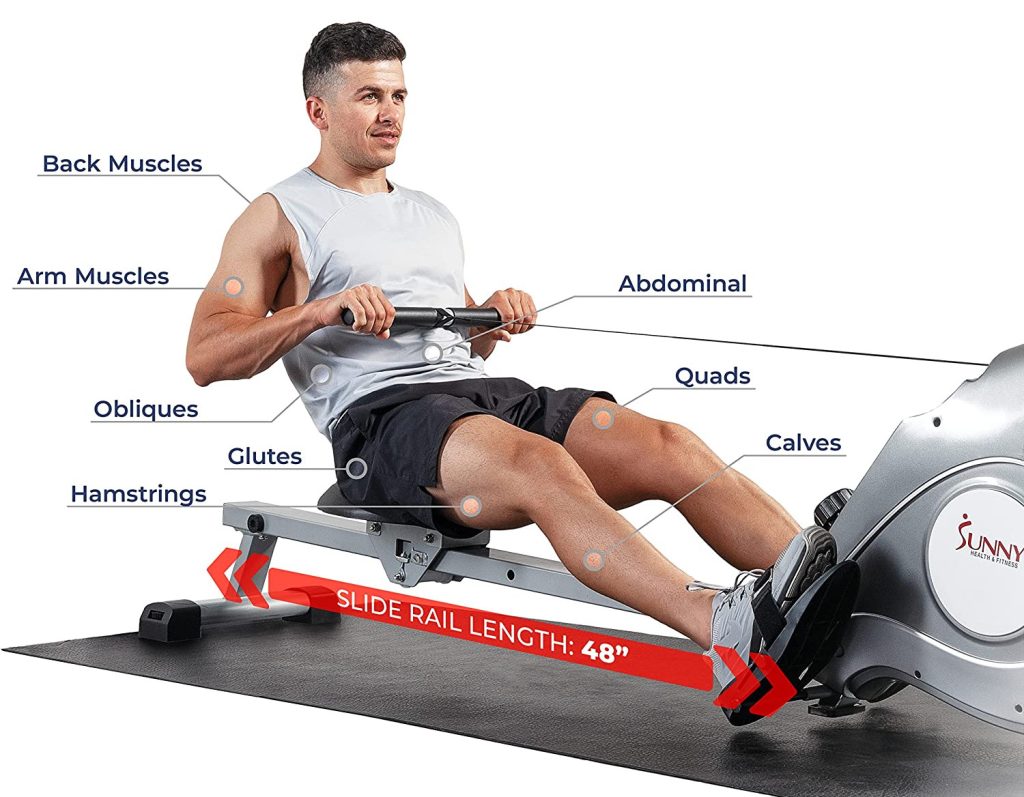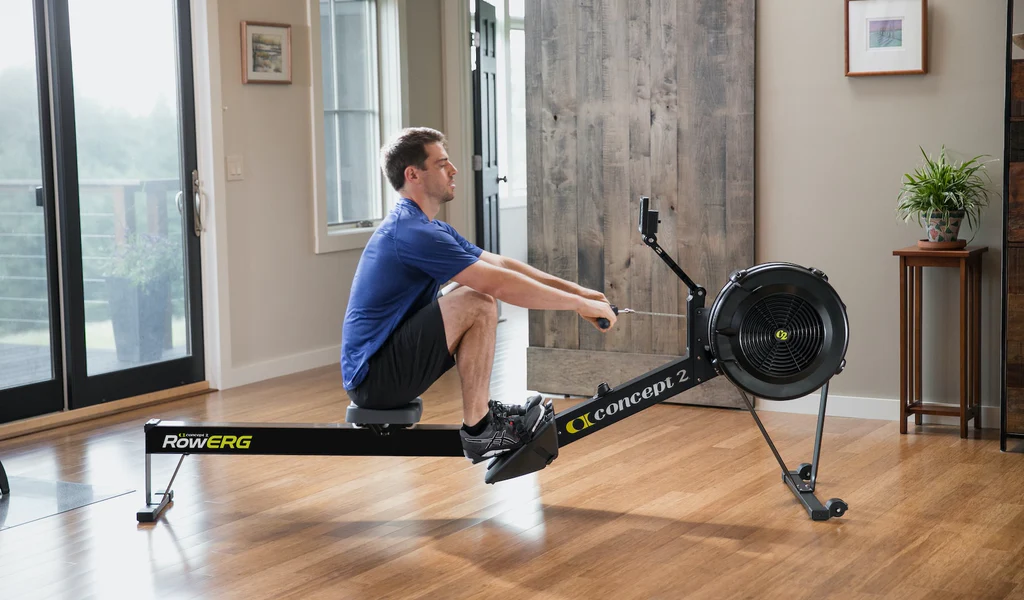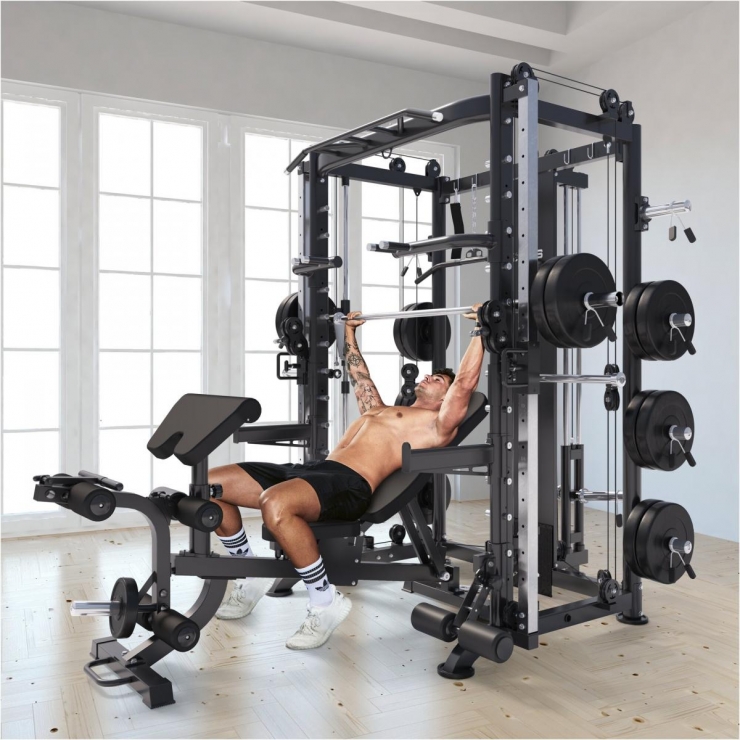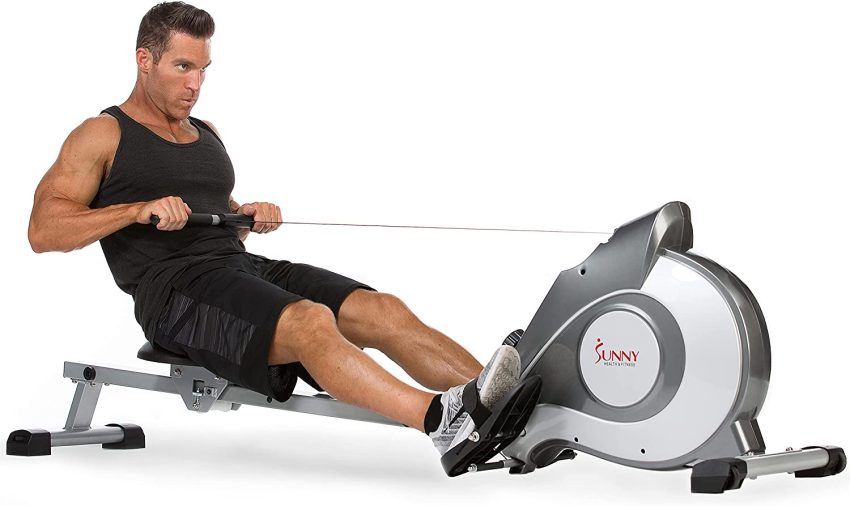Have you ever given thought to rowing machines when considering a full-body, muscle-building workout? If not, it’s time to put them on your radar.
Rowing machines are a hidden gem in the world of fitness, often overshadowed by the more popular treadmills and stationary bikes. But make no mistake. These machines provide an exceptional workout that targets several major muscle groups in one go.
The goal of this article is to shed some light on the underappreciated rowing machine and how it can contribute significantly to your muscle-building journey.
Muscle building, or hypertrophy as we trainers like to call it, is an essential aspect of overall fitness. While cardio exercises are excellent for heart health, strength training, which leads to muscle building, is equally important.
Building muscles not only makes us physically stronger and more capable, but it also increases our metabolic rate, which can aid in weight loss and management. Furthermore, it contributes to better bone health and can improve our posture, balance, and stability.
The Concept of Muscle Building
Now let’s dig a little deeper into the concept of muscle building. It’s not simply about lifting heavy weights and waiting for muscles to grow. Muscle building is a physiological process that involves micro-tears in the muscle fibers caused by strain during strength training exercises. When we rest and nourish our bodies after workouts, our bodies repair these micro-tears, causing our muscles to grow stronger and larger over time.
And how do rowing machines fit into this picture? Quite perfectly, in fact. Rowing, contrary to what some may believe, isn’t just an upper body workout. It’s a comprehensive exercise that engages all the major muscle groups of the body, including your legs, hips, back, abdomen, chest, arms, and shoulders. When you row, you’re working out these muscle groups against resistance, which leads to muscle fatigue and those all-important micro-tears. This means that a consistent rowing routine can definitely help you on your journey to build muscles.
Stick around because we’ll dive into more details about how rowing machines work in the following sections and how you can incorporate them into your workout regime to build muscles. It’s an exciting ride, and we’re just getting started!
How Rowing Machines Work
Rowing machines, or ergometers, simulate the action of watercraft rowing for exercise or training. At first glance, you might think it’s all about arm strength. Still, the truth is rowing is a balanced combination of leg push, core stabilization, and a pull that engages your arms and back.
Let’s break down the rowing stroke: It begins with the “catch,” where you are seated with knees bent, shins vertical, and arms reaching forward. This is followed by the “drive,” where you push with your legs, lean back slightly, and then pull the handle towards your lower chest.
Lastly, the “recovery” phase is essentially the reverse of the drive. The handle is moved away from the body, the body leans forward, and the knees bend as you slide forward on the seat.
From this sequence, you can tell that rowing is a compound movement that activates multiple muscle groups simultaneously. Your legs and hips provide a strong base and generate most of the power for the stroke, your core muscles maintain stability and body position, and finally, your arms, shoulders, and back muscles finish the stroke with a powerful pull.
Benefits of Rowing for Muscle Building

Now, you might be wondering, why choose rowing for muscle building? Here are the reasons:
Full Body Workout:
Unlike some exercises that target only specific muscle groups, rowing provides a full-body workout. It targets up to 85% of your body’s muscles in a single stroke, which includes quads, hamstrings, glutes, lats, core, shoulders, and arms. That’s efficient muscle-building!
Intensity Control:
The resistance on a rowing machine is typically adjustable, allowing you to control the intensity of your workout. Whether you want to focus on building strength (lower reps, higher resistance) or endurance (higher reps, lower resistance), the rowing machine caters to your needs.
Low Impact:
While it’s highly effective at building muscle and improving cardiovascular fitness, rowing is also low-impact, meaning it’s easier on your joints than weight-bearing exercises like running. This makes it a suitable option for people of all fitness levels and ages, even those with joint issues or injuries.
Contribution to Overall Fitness and Health:
Apart from muscle building, rowing has several other health benefits. It enhances cardiovascular fitness, aids in weight loss, improves posture, reduces stress, and promotes better mental health through the release of endorphins.
In conclusion, rowing machines provide a unique combination of cardiovascular and strength training that few other gym machines can match. They offer an excellent way to achieve your muscle-building goals, all while reaping numerous other health benefits.
But stay tuned. There’s more to come! We’re going to delve into the benefits of rowing versus other popular workouts, and we’ll also share some practical tips on how to make rowing a part of your fitness routine.
Types of Rowing Machines and Their Impact on Muscle Building
There are four main types of rowing machines: hydraulic, air, magnetic, and water rowers. Each type has its unique features that can impact muscle building.
- Hydraulic Rowing Machines: These machines use cylinders filled with fluid to create resistance. The resistance is typically adjustable, allowing you to control the intensity of your workout. Because of their compact size, hydraulic rowers may not allow for a complete range of motion, slightly limiting their muscle-building potential. However, they’re an affordable option that still provides a solid workout.
- Air Rowing Machines: These machines use a flywheel to create resistance, and the harder you pull, the more resistance you feel. This mimics the natural dynamics of rowing on water, providing a well-rounded, full-body workout. It’s an excellent option for building both strength and endurance.
- Magnetic Rowing Machines: Magnetic rowers use magnetic resistance, which is quiet and smooth. Like hydraulic rowers, the resistance is adjustable. They provide a great total body workout and are an excellent choice for strength training.
- Water Rowing Machines: These machines use a water flywheel to simulate the feel of rowing on water. They provide a lot of resistance and give a comprehensive full-body workout, making them great for muscle building. Plus, the soothing sound of water adds to the experience!
Proper Rowing Technique for Muscle Building

Proper technique is key for any workout, and rowing is no exception. A correct rowing stroke will engage all the right muscles and prevent injuries, ensuring you get the most out of your workouts. Here’s how to do it:
- The Catch: Start with knees bent, shins vertical, leaning slightly forward from the hips with arms extended. Keep your back straight!
- The Drive: Push with your legs first, then lean back and pull the handle towards your chest. Your legs should be straight, and your body should lean back slightly, with elbows tucked in.
- The Finish: At the end of the drive, your legs are fully extended, your body is leaned back slightly, and the handle is pulled into your chest.
- The Recovery: Extend your arms, lean forward from the hips, and bend your knees to slide the seat forward. This is the reverse of the drive.
Remember, rowing should be a smooth, flowing motion, not a jerky series of individual movements. Keep the motion fluid, and be patient. Good technique can take some time to learn, but it’s worth it for the muscle-building benefits.
In the next sections, we’ll compare rowing to other workouts and provide practical tips for incorporating rowing into your routine.
Rowing Workouts for Building Muscles
Rowing can be more than just a cardiovascular exercise; it can be a serious muscle-building workout too! The key is to focus on the resistance and the drive phase of the stroke. Here are some sample rowing workouts that focus on muscle building:
Strength Rows:
Set the rowing machine at a higher resistance level and row for a shorter time period or distance. This will increase the demand for your muscles, similar to lifting heavier weights.
Interval Rows:
Row as hard and fast as you can for 1 minute, then slow down for 2 minutes to recover. Repeat this cycle 5-10 times. This helps build both muscular strength and endurance.
Pyramid Rows:
Start with a low resistance level and row for 2 minutes. Then, increase the resistance by one level every 2 minutes until you reach the maximum resistance. Then, decrease the resistance by one level every 2 minutes until you’re back at the starting resistance.
Can a Rowing Workout Substitute Strength Training at a Gym?

Rowing on a machine is a form of resistance training that works for several major muscle groups. It can definitely help build strength and muscle tone. However, whether or not it can be a substitute for strength training in a gym depends on your specific goals.
If you’re aiming to gain significant muscle mass or focus on specific muscles, traditional strength training in a gym might yield faster results. The variety of equipment and exercises available in a gym allows you to target individual muscle groups more precisely than a rowing machine.
However, if your goal is to increase overall muscular endurance, enhance cardiovascular fitness, lose weight, or attain a lean, toned physique, then a rowing machine can be an excellent choice. Rowing works out the entire body, providing a balanced approach to strength training.
While you can definitely shape and tone muscles with a rowing machine, building large, bodybuilder-style muscles with rowing alone might be challenging. This is because rowing is more of a compound exercise that works multiple muscles together, as opposed to isolation exercises found in weightlifting that target specific muscles for growth.
A rowing machine can complement a gym workout routine, providing cardiovascular benefits and improving overall muscle tone and endurance. But for significant muscle gains or targeted muscle growth, traditional strength training might still be the best bet. But remember, each person is unique, so what works best for you will depend on your personal fitness goals, preferences, and commitment.
Summary
And there you have it, folks! Rowing machines truly are one of the unsung heroes of the fitness world. When it comes to building muscles, these fantastic machines can offer so much more than just a heart-pounding cardio workout.
They engage your entire body, provide adjustable resistance, and allow you to switch up your workouts to keep those muscles guessing – all the elements needed for a successful muscle-building routine.
Rowing machines offer a compound exercise that simultaneously works the upper and lower body muscles, providing a well-rounded strength training session.
Whether you’re aiming for overall fitness, seeking a lean and toned physique, or looking to supplement your regular strength training, rowing machines are an effective and efficient choice.
Remember, the importance of proper technique can’t be overstressed. Using the right form will not only optimize your muscle-building efforts but also protect you from potential injuries.
So, if you haven’t already, why not give rowing a try? Incorporate it into your fitness routine and experience the benefits firsthand. The beauty of fitness is that there’s always room for experimentation and discovery. Try new things, challenge your body in different ways, and most importantly, have fun doing it.
Stay motivated, stay consistent, and happy rowing! Your muscles will thank you.
